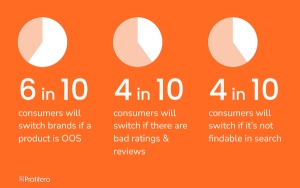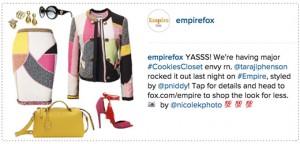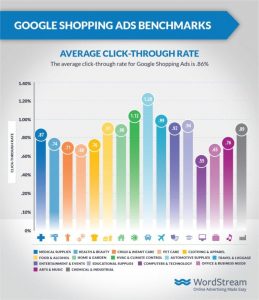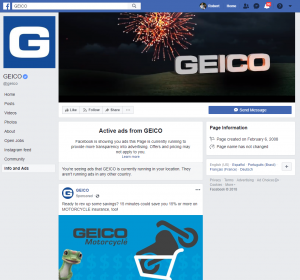The role of culture in the business of brands cannot be overstated. It’s the reason that Rihanna is not only one of the world’s biggest music superstars, but also founder of a leading beauty brand. It’s how Doja Cat helped Taco Bell sell more than 20 million Mexican Pizzas, and boost overall sales by 8%. It’s why we have major motion pictures based on consumer products, such as Air [Nike Jordans] and The Super Mario Bros. Movie, as well as the forthcoming Barbie and Gran Turismo, based on the PlayStation game. And yes, it’s why a small social influencer post can produce a month-long headache for Bud Light.
Marcus Collins, a University of Michigan marketing professor and head of strategy at Wieden+Kennedy, has spent his career both studying and executing how brands can better utilize culture to connect with their audiences.
In his new book For The Culture: The Power Behind What We Buy, What We Do, and Who We Want to Be, Collins reveals all that he’s learned about how culture influences so many of our decisions, and how marketers can be more effective in tapping into it.
A Detroit native with an engineering degree, Collins’s work spans major brands such as Nike, Ford, and McDonald’s. He helped Eggo tap into Stranger Things, somehow linked up the pork manufacturer Farmland with streetwear gods Supreme, and used Edward Bernays’s propaganda theory to launch the Nets in Brooklyn. Before advertising, he ran digital strategy for Beyoncé.
I spoke to Collins about why this is the right book for right now, how culture can help brands transcend the value propositions of the products they bring to the world, the biggest barrier that’s holding back some brands, and why even in a polarized culture, there’s no such thing as playing it safe.
Fast Company: The word culture is thrown around a lot in the world of marketing and advertising: how to understand it, how to tap into it, how to create it, and more. Too often it’s treated like The Force in Star Wars, the mystical thing that you might be lucky enough to harness, as opposed to something you can measure and even manipulate. For The Culture really digs into the power of articulating what culture actually is, and how to use it to connect with your audience. What made you want to write this book right now?
Marcus Collins: One reason is, I realized that in marketing you always hear, ‘Let’s get informed by culture,’ or ‘What’s happening in culture?’ But if you ask five people to define culture, you get 30 different answers. So what are we talking about here? How do we work together on this if we don’t have a common, concrete language? You can never operationalize it if you don’t have that language.
This was right around the time that I started investing in the social sciences, understanding the underlying physics of humanity. Once you have that language, then you can operationalize it, and harness it in ways to get people to adopt behavior, because there’s no external force more influential to human behavior than culture.
FC: The book is definitely accessible for anyone, but as both a marketing professor and an agency head of strategy, what do you hope people in marketing and advertising take away from it?
MC: At the most straightforward level, the book is to help people use culture to get people to move, but it’s also meant to highlight what the responsibilities are in being empowered with the levers to do that. It’s not enough for us as marketers to influence behavior to sell more widgets, to get people to vote, to get people to recycle, get people to download or subscribe. There are implications to our actions. Just as I want people to be intentional in their decisions as consumers, I also want marketers to be intentional.
I talk about the idea as IPO: What’s my intention? What’s the perspective of someone else? Then, what are the potential outcomes? That calculus has to be involved in what it means to be a good marketer—not just driving sales, downloads, votes, or whatever our ambitions are. More broadly, it should be knowing we play a role in a bigger ecosystem that we call society, and we should be mindful and responsible about how we engage with it.
FC: There’s a line I really liked in the book’s intro: “This isn’t about marketing or technology, category, or business model. This is all about people and the governing operating system that informs what we do and with whom we do it.” Every agency or marketer will tell you that they pay attention to people and are steeped in culture, yet we still see some brands chasing trends like a cat pursues a laser. What is the biggest barrier or challenge holding them back?
MC: There’s this realization that it has less to do with what you do as a marketer or as a brand, and more to do with who [the audience] are as people and finding ways to connect with them based on who they are, not what you do. It’s not a marketing book, it’s a people book. It’s about understanding who we are, and the underlying physics that govern our behavior, whether we’re conscious of it or not. It’s about transcending the value propositions of the products that we bring to the world, and finding ways to connect with people based on how they see the world.
When brands find themselves connecting at that level, they’re no longer defined by what they do, but why they do it, or how they see the world or their conviction—which from a business perspective, completely opens the aperture on which industry you’re in. If I’m Nike, I’m not in the sneaker industry, I’m in the “every human body is an athlete” industry. So any way that I can support athletes to be the best versions of themselves, that’s the business I’m in. If it’s sneakers, great. If it’s apparel or great technology, great. If it’s film, great.
Operating at that level is the zenith of brand strength. Marketers have to get beyond the conventional wisdoms of marketing that it’s all about the product and product-consumer fit. That works on a transactional level. But if we want to get to a cultural level, it’s about conviction and conviction fit.
FC: Right now, culture is extremely polarized across many fault lines, so the notion of brands and culture is charged in a way that it hasn’t been before. You’ve got “Get woke, go broke,” you’ve got the Bud Light situation. How should brands think about navigating the turbulence of culture?
MC: The cultural context is very polarized, and because of that, so many brands decide to try to sit in the middle and not disrupt anybody. Play it simple.
I’d say neutrality isn’t really a viable option. This is about conviction. What are you willing to stand for? Those are the things that are center to who we are in the world. The brands which stand with conviction, whether you like them or not, at least you respect them. Otherwise, you’re saying that you don’t stand for anything and would rather have a transactional-based relationship with your consumers. That’s fine, but in a transactional relationship, now you’re susceptible to disruption if someone has a sharper razor, or someone’s car goes faster, or someone’s shampoo gives them more body. It’s a different race.
The idea of being a part of culture, and contributing to the cultural discourse, should come from a place of conviction—what you believe. How do you see the world, and what are you willing to stand for? I know that seems challenging to brands, and that’s fine if you don’t have the appetite for it, but you also won’t be able to benefit from it.
Your brand is a vessel of meaning, and that meaning isn’t controlled by you. It’s negotiated by everyone else. Take a stand on the things you stand for, and ignore the rest of the noise. This idea of playing to the middle or playing it safe is a myth. You talk to the middle, and you’re talking to no one.
(2)









